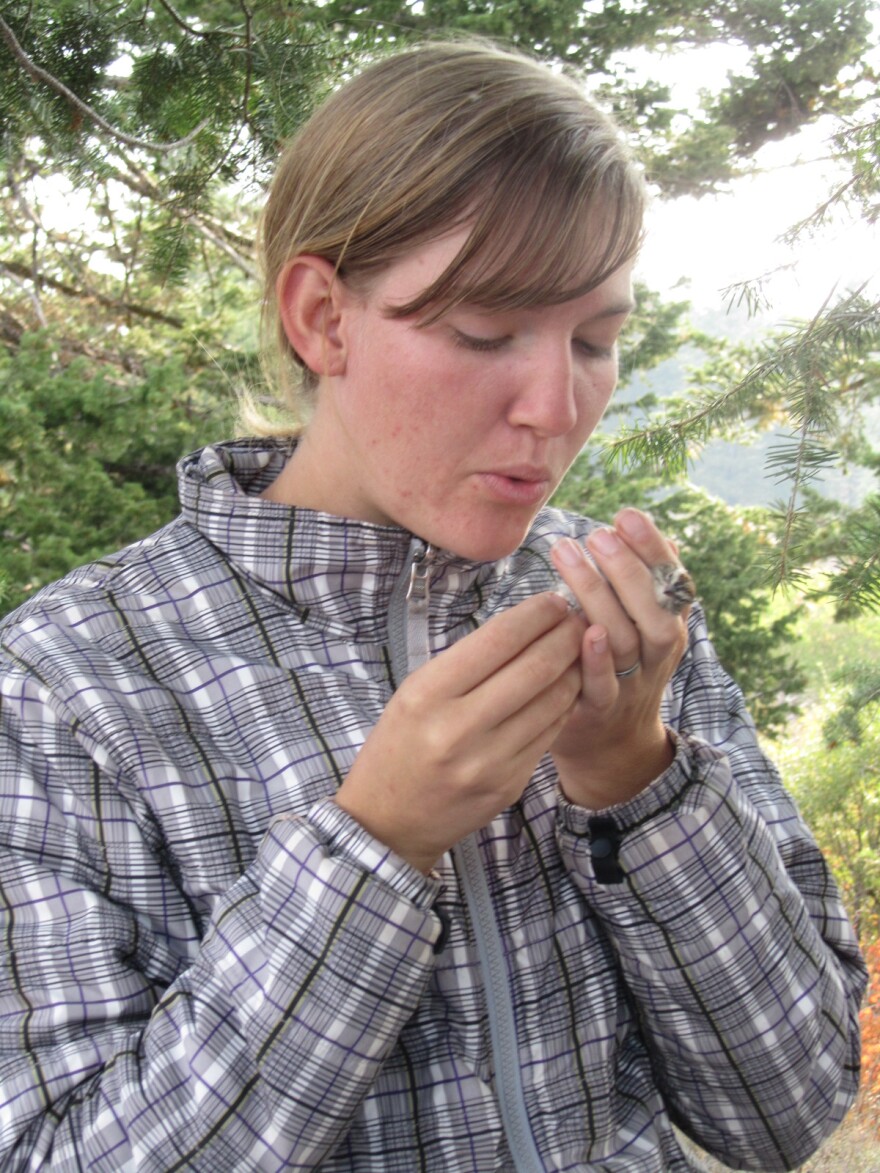Scientists are trying to understand how road noise affects animals. So they’ve set up a road of sorts in the hills above Boise and they’re capturing birds to find answers.
Heidi Ware holds an angry bird in her hand. “This is a Cassin's Vireo and they’re pretty well-known for being pretty feisty birds in the hand, so you can see he’s biting my finger right now.”
The Boise State graduate student uses her other hand to jot down notes, including its age, sex, and weight. This is one of 60 bird species she expects to see as she works on what’s called the Phantom Road Project in the hills above Boise.
The project asks a simple question. How does road noise affect animals? Primarily, migratory songbirds like that feisty bird Ware holds in her hand.

To do this the project’s director Jesse Barber set up a “highway” in the forest. He uses the recorded sound of cars to imitate a real roadway. “Roads are this mix of impacts, they’re collisions, they’re visual disturbance, chemical pollution, predators moving along edges, and noise.”
Barber says current research shows many animals stay away from roads. But those past studies used real roads. Barber says it’s hard to tease out whether it’s the road noise, or some other factor, that affects animals. “But by synthesizing just the noise component of the road, we can individually examine that stimulus.”
So Barber, who’s an assistant professor in Biological Sciences at Boise State, set about creating this phantom road. Heidi Ware describes it this way, “The road is about 700 meters long and it’s made out of 15 different speakers that are all playing road noise at the same time.”
Cameras are placed near the “road” and at a control site a few ridges away. Researcher Chris McClure takes remote pictures of any mammal that comes near either site. “So far we’ve gotten mountain lions, elk, some black bears, foxes, skunks.”
The team even counts bats to see if they avoid the noise. But the main focus is on migratory songbirds. This is the perfect spot to study them. Heidi Ware says the hilly landscape is covered with a tasty carpet of chokecherries and bitter cherries. “They provide a lot of carbs for the birds and there’s a lot of insects in the vegetation as well that provide a lot of protein, so it’s a great combo of fruit and insects that the birds can feed on.”

This is the last good feeding ground for migrating birds, before they head south across the desert. They land here, and spend four or five days eating everything in sight.
“Road noise is something that might impact a bird’s ability to forage and so if they’re not able to eat as well and they have to spend more time looking out for predators, instead of just listening for predators, then they might not put on fat as well,” says Ware.
Fat is a bird’s migratory fuel. Without it, they can’t make the next long-distance hop in their migration. And fat is one of the things these researchers measure. It’s what field biologist Rose Swift is looking at as she holds a bird in her hands. “It’s a red-naped sapsucker which we hardly ever catch here.”
She tips the bird on its back, and blows gently on its chest. “Oh my goodness,” she says. “This is a really fat bird. Oh my goodness.”
The bird’s feathers ripple apart to expose the skin, and the fatty deposits its built up for migration. Swift notes the fatty level on the bird’s chart. Meanwhile Ware does the same thing for her Cassin's Vireo.

This team catches birds that come near the Phantom Road in special nets hung up between shrubs. At another site, away from the road noise, a different team also catches and charts birds. The two sets of data will be crunched by project supervisor Jesse Barber. “Because if noise is one of the more important things to explain the impacts on birds, then we can try and make roads quieter, while still getting the same number of people through an area.”
Barber says there are ways to make roads quieter like changing where roads are built or slowing cars down. His team will know more after they spend a second summer at the site next year gathering more data. He’ll share the findings with the National Parks Service. It’s funding the $250,000 study.
Copyright 2012 Boise State Public Radio












